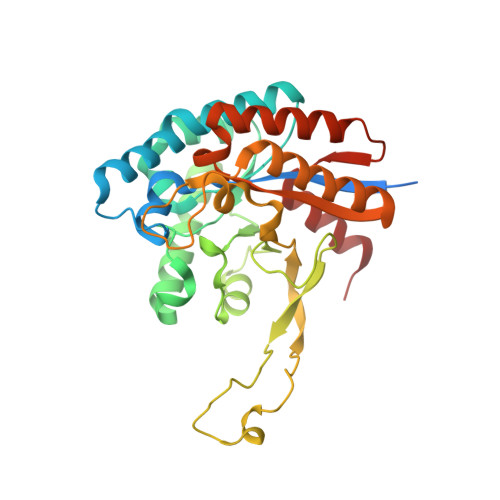The Structure of Helicobacter pylori HP0310 Reveals an Atypical Peptidoglycan Deacetylase.
Shaik, M.M., Cendron, L., Percudani, R., Zanotti, G.(2011) PLoS One 6: e19207-e19207
- PubMed: 21559431
- DOI: https://doi.org/10.1371/journal.pone.0019207
- Primary Citation of Related Structures:
3QBU - PubMed Abstract:
Peptidoglycan deacetlyase (HP0310, HpPgdA) from the gram-negative pathogen Helicobacter pylori, has been indicated as the enzyme responsible for a peptidoglycan modification that counteracts the host immune response. HpPgdA has been cloned, purified and expressed in good yield in E. coli. It has been crystallized, its structure determined and activity tests in vitro performed. The enzyme, which belongs to the polysaccharide deacetylases protein family, is a homo-tetramer. The four polypeptide chains, each folded into a single domain characterized by a non-canonical TIM-barrel fold, are arranged around a four-fold symmetry axis. The active site, one per monomer, contains a heavy ion coordinated in a way similar to other deacetylases. However, the enzyme showed no in vitro activity on the typical polysaccharide substrates of peptidoglycan deacetylases. In striking contrast with the known peptidoglycan deacetylases, HpPgdA does not exhibit a solvent-accessible polysaccharide binding groove, suggesting that the enzyme binds a small molecule at the active site.
Organizational Affiliation:
Department of Biological Chemistry, University of Padua, Padua, Italy.















